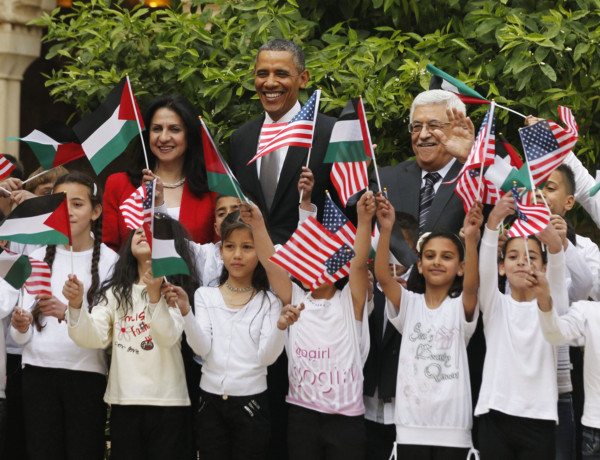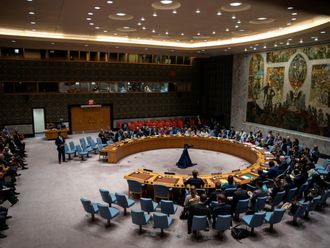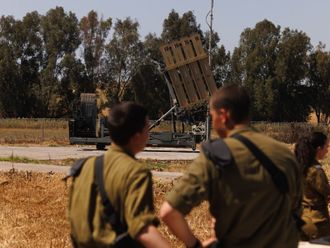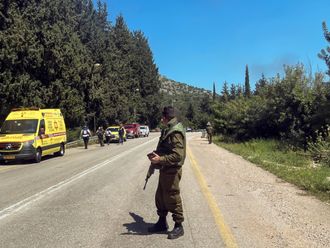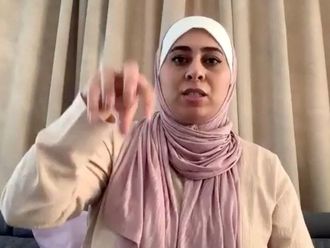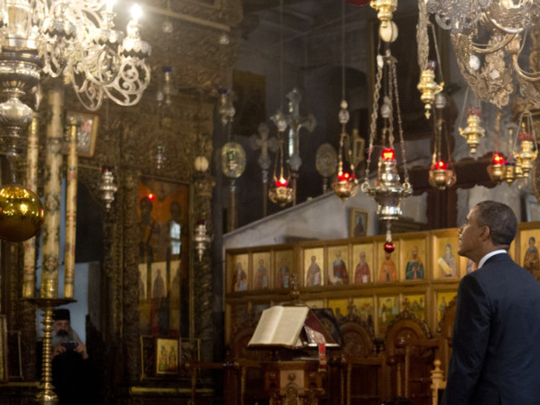
Occupied Jerusalem: A day after challenging Israelis to embrace peace with Palestinians, US President Barack Obama was to face scrutiny on Friday over his strategy on Syria during an overnight stay in Jordan.
Following a three-day trip to Israel and the Palestinian territories, his first as president, Obama was to fly to Amman for talks and a private dinner with King Abdullah II, after wrapping up his trip to the Holy Land with a visit to Bethlehem’s Church of the Nativity.
But an unexpected sandstorm forced the president to travel by motorcade rather than helicopter, giving Obama an unscheduled experience of Israel’s towering security wall which loops around the not-so-little West Bank town where Christians believe Jesus was born.
While the thrust of his Israel trip was reassurance that the United States would mount an “eternal” defence of the Jewish state in the face of the Iranian nuclear threat, Obama will turn to the agony of Syria’s civil war in Jordan.
Jordan is sheltering nearly 436,000 Syrian refugees, a figure expected to rise to 700,000 by the end of this year, as people fleeing the vicious sectarian fighting between Bashar Al Assad’s forces and rebel groups spill over its borders.
Obama has resisted pouring US arms or ammunition into the conflict, which the UN estimates has taken at least 70,000 lives, but has offered logistical support to rebels and hundreds of millions of dollars in humanitarian aid.
He will also support political reform efforts inside Jordan, which has been an oasis of relative calm in a region swept by turmoil following the Arab Spring.
In ocupied Jerusalem, Obama said the United States was investigating claims that chemical weapons had been used in Syria, warning it would be a “gamechanger” and that Al Assad’s regime would he held accountable.
On Friday, after a brief meeting with Netanyahu, Obama set off for Bethlehem, travelling by motorcade, not helicopter, after a sudden sandstorm swept the city.
The last-minute change of plan gave Obama an unscheduled experience of the eight-metre-tall wall which loops around the West Bank city.
As the huge motorcade wound through the steep, narrow streets, crowds of onlookers watched in silence, with no sign of the enthusiasm which usually greets the convoy. Some held up signs of protest reading: “No return no peace.”
Inside the cavernous, darkened interior of the church, he was briefly shown around by Palestinian president Mahmoud Abbas and church officials before leaving for the airport.
On Thursday, Obama’s edgy news conference with Abbas in Ramallah reflected Palestinian disappointment with his failure to live up to first-term vows to help them secure their own state. The frosty atmosphere lacked the bonhomie of his bonding session with Netanyahu on Wednesday, as the two sought to prove their prickly relationship was a thing of the past.
Although Obama singled out Jewish colonies as a major obstacle to reviving talks, he did not call for a new freeze, although Abbas insisted a construction moratorium was a must if negotiations were to resume, his political adviser said.
The Palestinians for the most part went largely empty-handed, although the finance ministry said $200 million in aid, which had been blocked for months by Congress, had been freed up in the weeks running up to the visit.
Meanwhile, Secretary of State John Kerry, who is travelling with Obama to Jordan, is to return to Israel on Saturday evening “to review the results of the president’s visit following his stops in Ramallah and Amman,” the State Department said.


